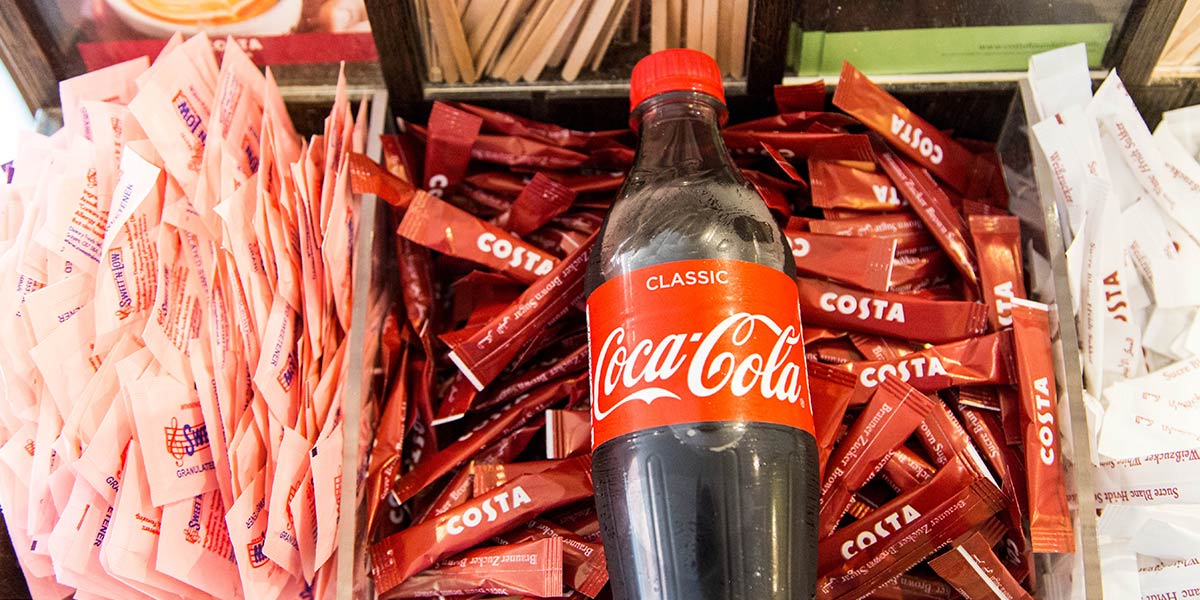Coca-Cola’s purchase of Costa Coffee is a smart move away from sugar and gives the company plenty of options, argues head of multi-asset investments David Coombs. And the growth in coffee sales may surprise you …

It’s the real (skinny) thing
Every workday morning, Tracey and I call into Costa at Swindon station to obtain some caffeine in preparation for the nightmare that is Great Western Rail. (For those outside London, it’s like walking to work but it takes longer.) Maurice the barista automatically prepares our medium skinny latte and skinny flat white as soon as he spots us and doesn’t even offer “their new blend” anymore!
This week, Maurice finds himself working for Coca-Cola rather than Whitbread, although I’m not sure he was that bothered when I mentioned it. He was more worried about the weekend – apparently weekend travellers are much more miserable than the commuters during the week. Who knew?
So why is this American giant of sugary explosions in our mouths paying £3.9bn for a British chain of milky coffee shops from an old brewer who doesn’t brew anymore? Obesity.
Despite Cosmopolitan belatedly embracing plus-sized models, obesity is set to become one of the biggest issues impacting government finances over the next few decades. As lifestyles from Basildon to Beijing have changed with the times there’s been a shift in diets from basic, natural ingredients to ready meals and snacks full of sugar and salt – not to mention chemicals substituting for these tastes. People are busier, allegedly, so have less time for exercise – certainly getting to level 35 of Call of Duty Zombies can take a few months of night-shifts for a generation Z-er.
I think governments will react, possibly in draconian ways, against food and drink producers. But it’s also possible new trends may emerge. Growth in alcohol substitutes (non-alcoholic beer, spirits without the fun, and grape juice) is accelerating, with specialist websites popping up to provide what has been up till now a niche retail offering. Many people are starting to rail against poor diets and tout healthy living. Soft drink sales have slowed over the past few years, so Coca-Cola has been buying up those healthier beverages that are becoming more popular. And that now includes coffee: last year ready-to-drink coffee and milk-based beverage sales rose almost 12% in the US; bottled water was the next fastest growing with 3.8%. But even if Coca-Cola don’t take Costa head-to-head with Starbucks in North America, its Asian and Middle-eastern businesses should be a great opportunity. Fitch’s BMI Research expects the global coffee and tea market to grow by 6.4% each year till at least 2021, driven principally by punters in emerging markets.
Seedlip, a non-alcoholic spirit with no calories, is appearing in more and more restaurants and high end bars, clearly driven by demand. Fever-Tree, which has been focused on producing mixers for spirits, has seen a pick-up in demand for its drinks in their own right as a substitute for alcohol. You can drink a Fever-Tree tonic without being laughed at; could you say the same for Coca-Cola-owned Schweppes (outside the US, that is)? That’s why Coca-Cola has launched a massive re-brand of its tired tonic and created the premium 1783 range.
The alcohol-substitute drinks industry is embryonic, but in the mainstream alcohol industry we have seen a switch from beer, which is highly calorific, to spirits. That’s why your local gastro pub probably boasts more than 200 types of gin. And yet, have you noticed often you have to accept your fourth choice of bathtub brew because they’ve already run out of it? Hm…
So Coca-Cola’s strategy makes sense – as does Whitbread’s decision to abandon beer in 2000 (some may say that call was perhaps a little early, but they don’t remember Trophy Bitter). I think today’s emergent trends reflect the beginning of long-term shifts to healthier eating and drinking. Spirits with better-tasting mixers is the way of the future, just as those who stick with beer are more likely to buy quality craft beers instead of buckets of chemically enhanced fizzy foam, brewed by a global beer colossus under a tarnished brand.
This echoes the bifurcation trends in other industries. You buy artisan, higher-quality producers that merit higher prices or you buy the bargain-basement, cheap mass-market. You buy a £5.50+ pints with notes of banana and gooseberries or 24 cans of cheap lager from Lidl. You buy 200ml bottles of Mediterranean tonic to bring out the thyme and rosemary botanicals in your gin, or you buy cocktails in a can for 85p. The middle remains toast.
As investors it’s vital that we recognise these seismic shifts in consumer behaviour and turf out the old but highly recognisable names that fail to either spot these or are unable to react. In my opinion, this move shows Coca-Cola gets it.

